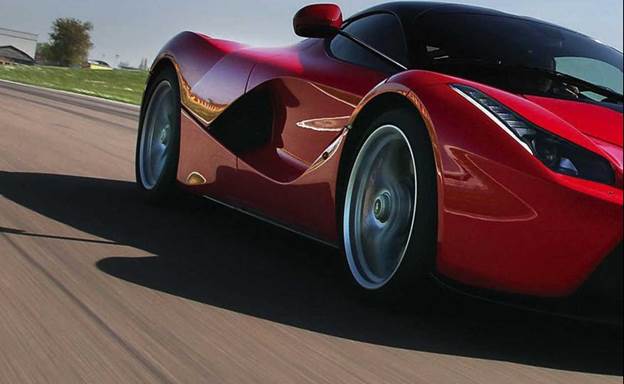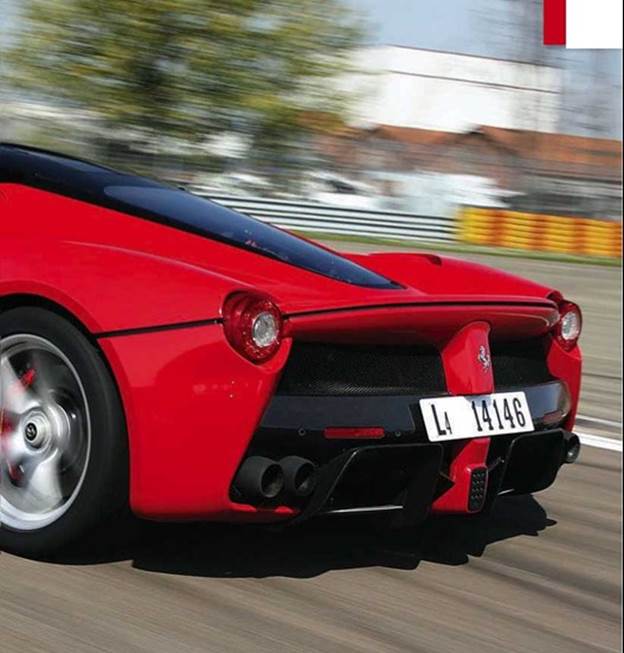Who would have thought it? A rip-roaring Ferrari featuring
powertrain electrification. But IC V-engine traditionalists shouldn’t fret too
much: LaFerrari is one of the greatest cars – let alone hybrid developments –
ever created.

The electronics
should be driven by the feel for the driver. After driving the car for 1,000m, we
want you to feel as if you have been driving it for years
The old adage that racing improves the breed hasn’t really
held true for some time; after all, modern race car technology is primarily
focused on aerodynamic efficiency and bears little relation to most
contemporary production road cars. For the latest super supercars, though, it
might just have more relevance. These hyper cars might be an exclusive breed,
but they rely on the style of hybrid powertrain technology developed for
today’s Formula 1 single-seaters.
In the grand scheme of things, road-going hybrid cars are a
relatively recent phenomenon, but if LaFerrari and its near-1,000ps stablemates
share basic technology with the rather more modest Toyota Prius and Nissan
Leafs of this world, the way the actual hybrid drivetrain is integrated into
the rest of the car’s technology is very different. Or, as Ferrari vehicle
dynamics chief Matteo Lanzavecchia puts it, once his team realized it didn’t
have to be for economy or as a nod to the green lobby, the end product could be
much more Ferrari. And by that, he means the engineering team could use the
system – and system integration – to influence the style of the car’s
performance as well as its extent. Employ hybrid technology, but with Ferrari
DNA, was the mantra.

Not only is
LaFerrari the manufacturer’s first hybrid project, the result is the most
powerful Ferrari to date
According to Lanzavecchia, it was essential that LaFerrari’s
vehicle architecture and mechanical and electronic control systems were all
tightly integrated at an early stage in the design process, rather than added
on later during development. The sum of those parts, though, would still be a
bigger number than any before: 810ps from the big 6.3-liter naturally aspirated
V12, plus an additional 165ps from the electric motor, co-developed with
Magneti Marelli, making LaFerrari the most powerful Ferrari ever and, in power
output terms, top of the modern day hypercar trio that includes the McLaren P1
– about which Ferrari is particularly sensitive – and Porsche’s all-drive 918
Spyder creation.
In fact, the P1’s general engineering layout is similar to
LaFerrari’s, but the significant detail is different; Ferrari felt that a large
naturally aspirated V12 was essential to the hybrid setup because it summed up
what the Italian car maker was all about, and equally important, it made the
right sort of Maranello noise. McLaren engineers, on the other hand, were less
concerned with operatics and more with weight distribution and packaging,
therefore choosing its flexible and compact M838T 3.8-liter twin-turbocharged
V8, albeit in uprated form. In P1, electric power fills the hole before the
turbos are up to speed, whereas the Ferrari’s system provides the instant surge
before the V12 is into its power band; the peak is a dizzy 9,250rpm with
maximum torque of 699Nm developed at 6,750rpm.

The LaFerrari
development team adopted a typically performance-related mantra during the
project: Employ hybrid technology, but with Ferrari DNA
Spinning Up
Ferrari’s engine team, under chief engineer Vittorio Dini,
decided to use the F12’s motor as a base for the LaFerrari powertrain, and then
looked to boost its power from 740ps, with the traditional way being to spin it
faster. The recent Ferrari V12s have a bore of 94mm and stroke of 75.2mm and
both were retained, but much effort was made to reduce reciprocating mass and
eliminating pumping losses. The compression ratio was increased from 13.5:1 to
14:1 and there is a microprocessor and a knock sensor for each individual
cylinder that independently varies the advance of each subsystem, depending on
the extent of any pre-ignition. The timing of both camshafts is constantly
variable, as is the length of the inlet tracts via solenoids linked to the ECU.
Both are attempts by Dini’s team to spread the power further down while
complying with emissions regulations.